Skiing jargon can be confusing to say the least. If you’re new to the world of skiing you’ve got enough to worry about without having to guess what a ‘fall line’ is.
We came up with this handy-dandy list of skiing terminology and snowboarding lingo to help you distinguish baskets from bumps and make some sense of what everyone keeps going on about!
If you want to understand what the younger crowd on the mountain are talking about as well make sure to check out our Guide to Ski and Snowboard Slang.
Skiing and Snowboarding Terminology Defined
A
Alpine Skiing: Classic downhill skiing as opposed to Nordic (Cross-Country) Skiing or Telemark Skiing. Skiing the way you likely think of when you hear the word ‘skiing’.
Après Ski: Après is the French word for ‘after’ so this literally translates to ‘after-ski’. The time between the lifts shutting at 4 or 5pm and dinnertime is the perfect opportunity to enjoy a hard-earned drink (or ten), have a bit of a dance (if you are so inclined), and swap (likely highly inflated) ski stories with strangers at the bar!
Avalanche: A mass of snow falling down the side of a mountain at high speeds. Avalanches are really only a concern off-piste. If you stay on open, marked pistes you don’t have to worry about avalanches as the ski patrol are responsible for ensuring the pistes are safe.
Artificial Snow: Man-made snow. Not as good as real snow, but helps to make sure the runs open as and when they should.

B
Backcountry – Often used interchangeably with the term off-piste, backcountry skiing actually refers to off-piste skiing that occurs far outside the ski resort area on unmarked slopes. This type of skiing and snowboarding takes place in more remote parts of the mountains and usually involves climbing uphill or ski touring as there are no ski lifts. As the backcountry isn’t patrolled or cleared of avalanche dangers it’s a place for knowledgeable experts or those accompanied by one.
Base: The bottom surface of your skis or snowboard to which wax is applied to improve glide on snow. Can also be used to refer to the ‘base station’ – the lowest point you would board a chair lift, cable car, or gondola – or the overall depth of the snowpack.
Basket: The round or star shaped piece of plastic on the bottom of your ski pole that prevents your pole from digging into the snow too deeply.
Binding: The piece of kit that attaches your boot to your ski or snowboard. Bindings on skis are designed to release the boot in the case of a fall whilst snowboard bindings don’t auto release.
Black Run: A difficult piste for advanced skiers and snowboarders.
Blue Run: A gentle piste suitable for beginner/intermediate skiers and snowboarders.
Box: A man-made feature found in the snow park. It’s literally a box for sliding along.
Bunny Slope: See Nursery Slope.
Button Lift: A ski lift with a round plastic disc at the end of a long pole. The disc is placed between the legs and gently pulls skiers and boarders up the slopes.

C
Cable Car: The largest aerial lift – these large cabins can hold upwards of 100 passengers, and often cover long vertical distances travelling up and down their own dedicated cable.
Carving: Clean turns using the edges of skis or a snowboard, leaving sharp turn lines in the snow. Often seen as a crucial step in progressing from intermediate to advanced ability.
Cat Track: Relatively flat paths used by piste bashers to get around the mountain.
Chatter: The vibration of skis or snowboards caused by moving at high speeds. Excessive chatter reduces contact between the ski and the snow and the ability to stay in control.
Corduroy: A common term for a freshly groomed piste as the small ridges resulting from the grooming process resemble a piece of corduroy fabric.
Couloir: French for ‘corridor’, a couloir is sleep and narrow gully with high sides. These are usually found off-piste, outside of the marked ski areas.
Crevasse: A deep, and often hidden, crack in a glacier. Potentially very dangerous, which is why off-piste glacier skiing is generally restricted to groups with Mountain Guides.
Cross-country Skiing: A part of the Nordic Skiing family, cross-country-skiers use very narrow skis with bindings that allow the heel to lift off the ski. Cross-country skiing is done on flat(ish) ground with gentle uphill and downhill sections.

D
DIN Settings: ‘Deutsche Industrie Normen’ is German for ‘Germany Industry Standard’, a now universally accepted measurement for the tension setting that determines the force needed to cause a ski binding to release in the event of a fall. Generally speaking, heavier skiers and more advanced skiers will use higher DIN numbers than lighter or beginner skiers.
Drag Lift: A category of surface lift that drags skiers and snowboarders up a slope. Button lifts and T-Bars are both types of drag lift.
Dry Slope: An artificial ski slope that approximates the attributes of snow using man-made materials such as plastic. These slopes are most commonly found in countries where natural ski slopes are non-existant or rare such as the United Kingdom and the Netherlands.
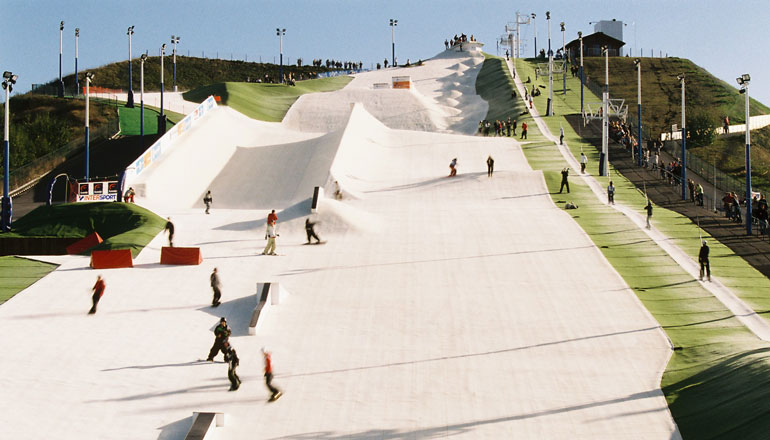
E
Edge: No, not the guitarist from U2 (although he does love the Alps), edges refer to the sharpened metal strips on the sides of skis and snowboards. They help cut in to the snow for smoother carving turns and bite in for quicker stopping.
Effective Edge: The amount of the edge that is in physical contact with the snow during a turn. Modern skis with sidecut have a longer effective edge than the straight skis of yesteryear, resulting in a more stable, easier-to-turn ski.

F
Fall Line: The most direct line down the mountain. If you fall, that’s the line gravity will take you down the hill.
First Lifts: Getting the very first lift up the hill and being the first to enjoy the fresh corduroy. Generally accompanied by a smug feeling and an even more smug Instagram post.
Flat Light: Low clouds, grey skies, and/or dim light making differences in terrain difficult to judge as the lack of shadow definition on the snow makes everything look flat.
Freeskiing / Freeriding: Adventurous off-piste skiing. Freeskiers and freeriders love big off-piste lines, couloirs, weaving through trees and often jumping off cliffs. Not to be confused with freestyle.
Freestyle: A style of skiing or snowboarding focused on doing tricks. You’ll find a lot of freestylers in the snow park.
Funicular: A subway-style lift that carries skiers up though the mountain in a rail car.

G
Glacier: A naturally-occurring mass of dense ice. In many ski areas, like Hintertux, Tignes and Zermatt, glaciers allow for skiing during the summer.
Gondola: An enclosed ‘bubble’ lift that fits, on average, between four and twelve passengers. Usually smaller than a cable car and faster than a chairlift.
Grab: Holding onto any part of your skis or snowboard while in the air. An important part of freestyle, grabs are used to increase the stylishness of a trick and to maintain balance.
Green Run: A very gentle piste suitable for first-timer and beginner skiers and snowboarders. Note that there are no green runs in Austria as they are incorporated within the classification of blue runs.
Grooming: The (generally overnight) process of smoothing out ski slopes after the resort is shut so they are in good condition at the start of the next day. Done with specialist grooming machines / piste bashers.
Grooming Machine: See piste basher.

H
Halfpipe: A u-shaped channel with vertical walls made for tricks and freestyle skiing and snowboarding. Halfpipe is a popular event at the X Games and the Olympics.
Hard Pack: Snow that’s been packed down as far as it will go, the snow on a groomed piste for example.
Heli-skiing: It’s not the cheapest of hobbies but if being flown to very remote, normally inaccessible off-piste areas to ski down beautiful slopes of untouched powder then it’s likely worth the cost. Contrary to popular belief, heliskiing isn’t just for expert skiers who crave extreme terrain, even off-piste novices can enjoy heliskiing with a guide on mellower slopes.

J
Jib: Riding skis or a snowboard on a non-flat surface like a box or a rail.

K
Kicker: A wedge shaped jump made of snow. Calling a kicker a ‘ramp’ is considered a faux-pas.

L
Lift pass: The pass that allows you access to the ski lifts in a particular ski area or resort. Sometimes simply a waterproof tag to be attached to the outside of a jacket, contactless swipe cards are now becoming very common. Remember that your swipe card will need to be on your left-hand side as that’s where the readers are.
Liftie: A ski-lift operator.
Always thank your liftie.
M
Magic Carpet: More reminiscent of sushi conveyor belts than flying rugs from Aladdin, these magic carpets are a flat, travelator-style lift often found next to beginner areas.
Moguls: Bumps carved into the snow; typically they are created by the turns of skiers, but they can also be carved out for perfectly shaped mogul field. The popularity of skiing moguls has dwindled over the past couple of decades but the passion still lives on in certain resorts like Verbier which holds an annual inter-resort mogul competition, Boss des Bosses.
Mondopoint: The internationally accepted sizing convention for ski boots. Nobody really seems to understand it, so here’s a conversion chart.
Monoski: The beautiful lovechild of a ski and a snowboard. A single, wide ski where the skier’s boots are attached side by side. Monoskiing was popular in Europe throughout the 80s and early 90s, but never quite caught on in the United States. This term is also used to refer to the “sit-ski” used by adaptive skiers.
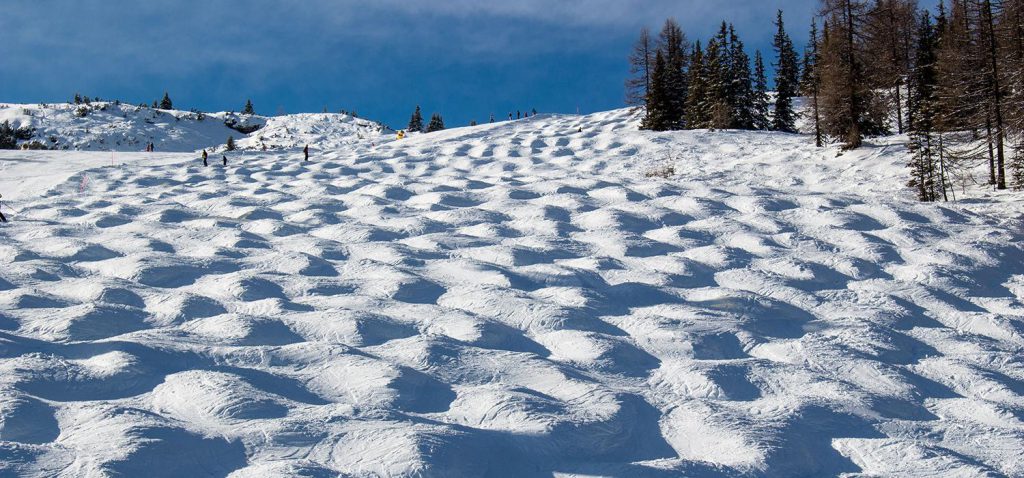
N
Nursery slopes: A very easy slope with a very gentle gradient that is the ideal place for first-timers and beginners to learn to ski or snowboard.
Nordic Skiing: Most commonly used to refer to cross-country skiing, but is actually a wider term referring to types of skiing where the toe is attached but the heel of the boot is free to lift up from the ski. Nordic skiing includes cross-country skiing, telemark skiing and ski jumping.

O
Off-piste: Often used interchangeably with ‘backcounty’, technically speaking, any time you are off of a marked run you are off-piste. Marked runs are controlled and secured by the local ski patrol and when you venture off of them (even by 30cm) you are technically in an uncontrolled environment and have to assume all the risks that come along with that.
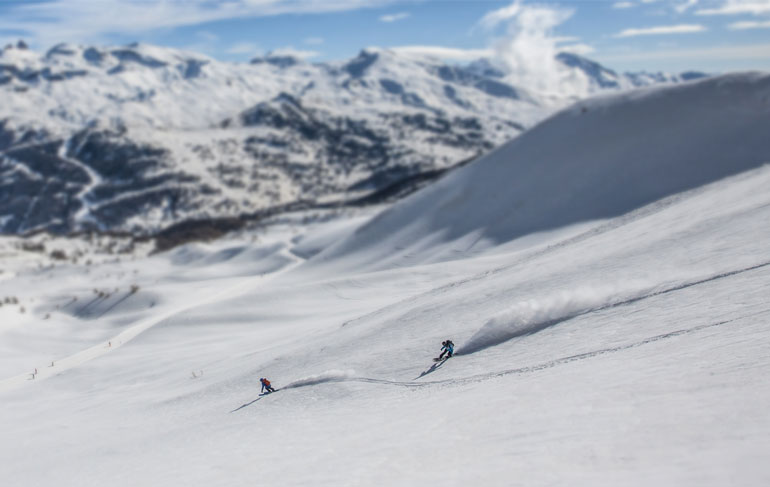
P
Parallel turning: Turning with skis in a parallel position as opposed to the perpendicular wedge shape of the snow-plough turn.
Park: See Snow Park
Piste: Designated ski runs. Comes from the French word for “ski slope.” Often referred to as ‘trails’ in North America.
Piste Basher: A slang term that has become widely accepted lexicon. Refers to the large piste grooming machines that smooth out the slopes at the end of the day.
Poma lift: See Button Lift
Powder: Fresh, lightweight snow that can be very deep and very soft! Considered by many to be the ultimate sensation in skiing and snowboarding, but you need to have the proper knowledge, the right equipment and a good level of ability.

Q
Queue: An unfortunate event at the bottom of a lift, often caused by people wanting to sit with their friends and not filling up all the seats.

R
Rail: A metal bar built to be slid on by skiers and snowboarders in the snow park.
Rope Tow: A simple type of lift consisting of a constantly moving rope that pulls people up or along a slope as they stand on their skis or snowboard.

S
Salopettes: Salopettes are ski trousers – waterproof trousers built to keep you warm and dry while skiing or snowboarding.
Schussing: Skiing straight down the hill without turning like a circus performer shot out of a cannon.
Ski patrol: Trained skiers employed by the resort to ensure slope safety, patrol the slopes and mitigate any possible dangers like the potential risk of avalanches after a storm and obstacles/risks on the mountain. They also act as a kind of on-slope paramedics, assisting injured skiers and boarders.
Skins: Strips of material that can be temporarily affixed to the bottom of skis for climbing up hills while Ski Touring.
Ski Touring: A combination of Alpine and Nordic skiing where skins are attached to the bottom of the ski while going uphill and the heel of the binding is free to lift. Before coming downhill the skins are removed and the heel is locked allowing the skier to descend a backcountry slope.
Snow Park: A special freestyle area filled with jumps, boxes, rails and other features for jibbing and aerial tricks. Some large snow parks will include halfpipes.
Snowplough: A skiing technique used by beginners to control speed and learn to turn. The front tips of the skis point inwards to create a pizza-wedged shape.

T
T-Bar: A surface lift similar to a Button Lift but shaped like a T. The handles of a T-Bar can accommodate two skiers on one lift but usually snowboarders ascend one at a time.
Tail(s): The rear of skis or a snowboard.
Telemark Skiing: A combination of cross-country skiing and Alpine skiing. The skier’s heels are detached as in cross-country skiing, but the skis are wide enough to handle high speed and make quick turns.
Tip(s): The front of skis or a snowboard.
Traverse: Skiing across a slope, often in a zigzag pattern, as opposed to straight down; typically done to keep speeds down on steep surface or to cut across a mountain.
Tree Line: The altitude on a mountain after which trees stop growing.

W
Wax: Applied to the base of skis and snowboards to help them glide more smoothly. Will need re-application after several uses.
White Out: Heavy snowfall or cloud cover that makes it impossible to see anything but ‘white’.
This short video we made with Lara D. offers some great whiteout skiing tips!


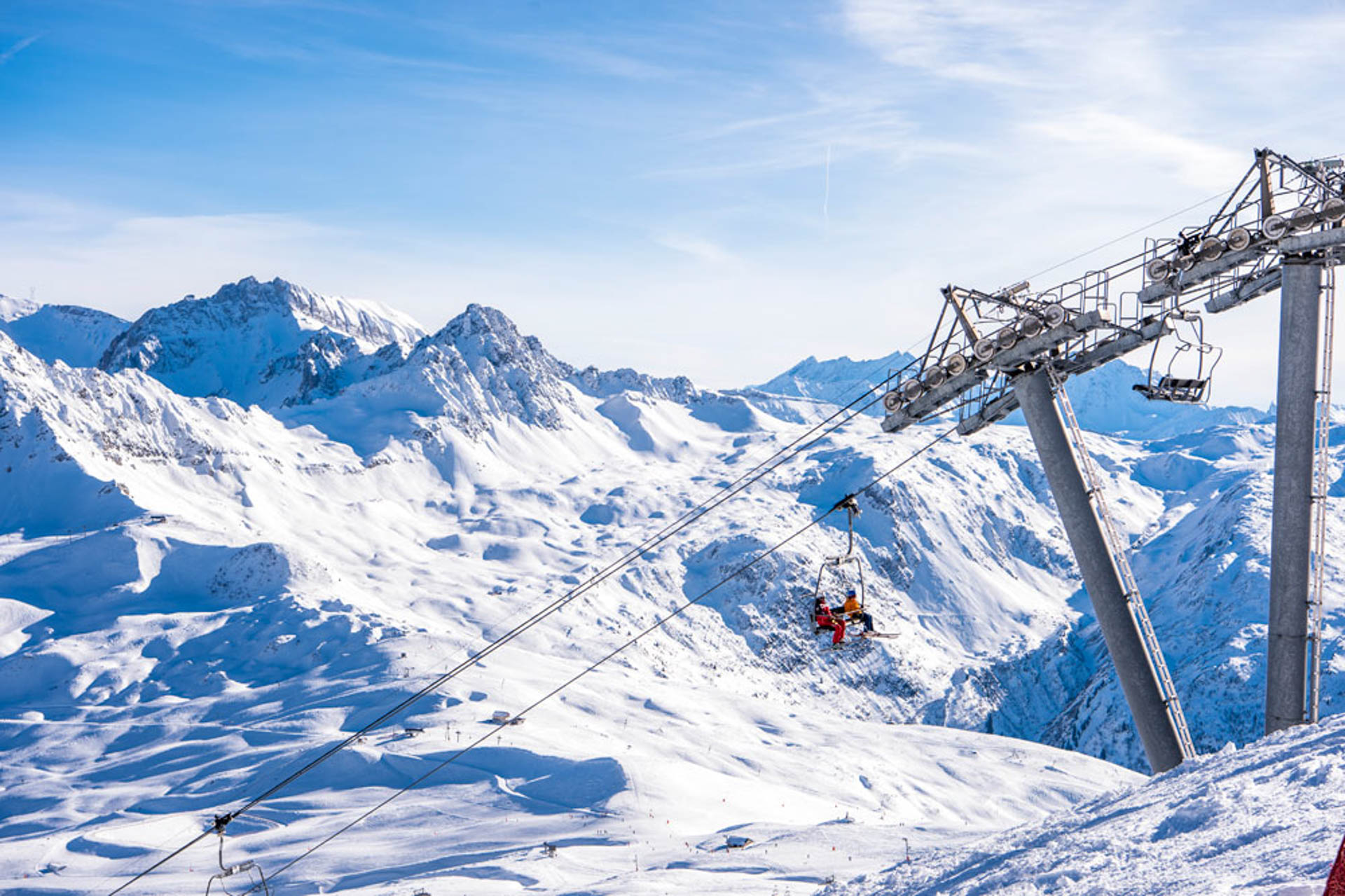
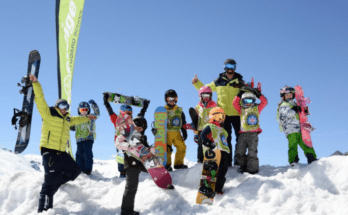
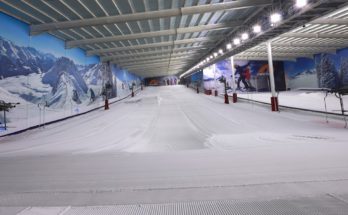
Great article, exactly what I needed.
Hi! This is kind of off topic but I need some guidance from an established
blog. Is it very difficult to set up your own blog? I’m not very techincal but I can figure things
out pretty quick. I’m thinking about setting up my own but I’m not sure where to start.
Do you have any ideas or suggestions? Thanks
Thanks for the tips!
I’ve added this article to my bookmarks
It’s amazing to go to see this web site and reading the views of all colleagues
on the topic of this piece of writing, while I am also eager of getting
know-how.